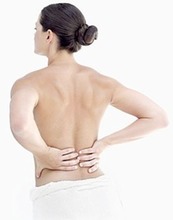 Adults
Adults
Osteopathic treatment is an art based on science. While drawing from all the basic sciences, the principle foundation of Osteopathic treatment is the study of anatomy and physiology. The Osteopathic physician’s treatment flows out of his or her understanding of the living person, communicated by visual inspection and hands-on assessment, and informed by extensive study of both anatomical science and the living anatomy in patients.
For all ages of patients Osteopathy treats what is called “somatic dysfunction.” Somatic dysfunction means simply: altered motion in the body’s tissues. It means that bones, joints, muscles, ligaments, fascia and membranes are not moving the way they should and are not getting adequate circulation of blood, lymph and cerebrospinal fluid. Osteopathy approaches this problem from two angles. First the D.O. finds specifically where there is impaired movement and function and facilitates release. Second the D.O. incorporated these findings into a treatment of the whole person, which assists the body’s own self-healing ability.

Adults have a number of reasons for which treatment is indicated. Life is demanding and strain occurs to our bodies in many different ways. Most of the time this strain is self-limited and does not lead to symptoms, but at times symptoms may occur or strain may remain in the system. If strain remains in the system it is usually the result of a specific injury, a repetitive motion, a particular awkward movement, or a new exercise or activity. Osteopathic treatment can help in cases where symptoms result, and also can work preventatively, helping the body release the strain or twist within the tissue before symptoms occur.
Adults often have a long history of injuries, sometimes going back as far as childhood or birth. These injuries over the years will play a role and perhaps “set the stage” for the current injury. Sometimes the reason a minor movement or injury causes moderate or severe symptoms is because underlying strain and injury was already present and left untreated. For healing to occur in some of these cases, both the recent injury and the older strains must be released.
There are two main types of conditions which may be helped. The first and most obvious type is structural or musculoskeletal issues like low back pain, neck pain, and tension headaches. The second type is problems that are not musculoskeletal or structural in nature, but have a structural component, which when treated assists in healing like sinus conditions, chronic ear problems, or dizziness.
Common Conditions for which Osteopathic Treatment is Recommended (this is not an exhaustive list):
- Headaches: Tension, Migraine, Cluster, and Chronic persistent headaches
- Head injury, Concussion, Traumatic Brain Injury
- Neck pain, Radicular pain (pain from the neck radiating to the arms)
- Upper and Middle back pain
- Injuries related to motor vehicle accidents
- Sports-related injuries
- Rib pain, chest pain
- Low back pain, sciatica, pain in the buttocks or tailbone
- Temporomandibular joint issues “TMJ”, jaw surgery
- Dental Malocclusion
- Tennis elbow, golf elbow, pain in the wrist or hands
- Carpal Tunnel Syndrome
- Ankle, foot, and knee pain
- Ankle Sprains
- Pelvic Pain
- Infertility
- Fibromyalgia
- Occipital neuralgia
- Dizziness
- Pneumonia
- Chronic or Recurrent Sinusitis
